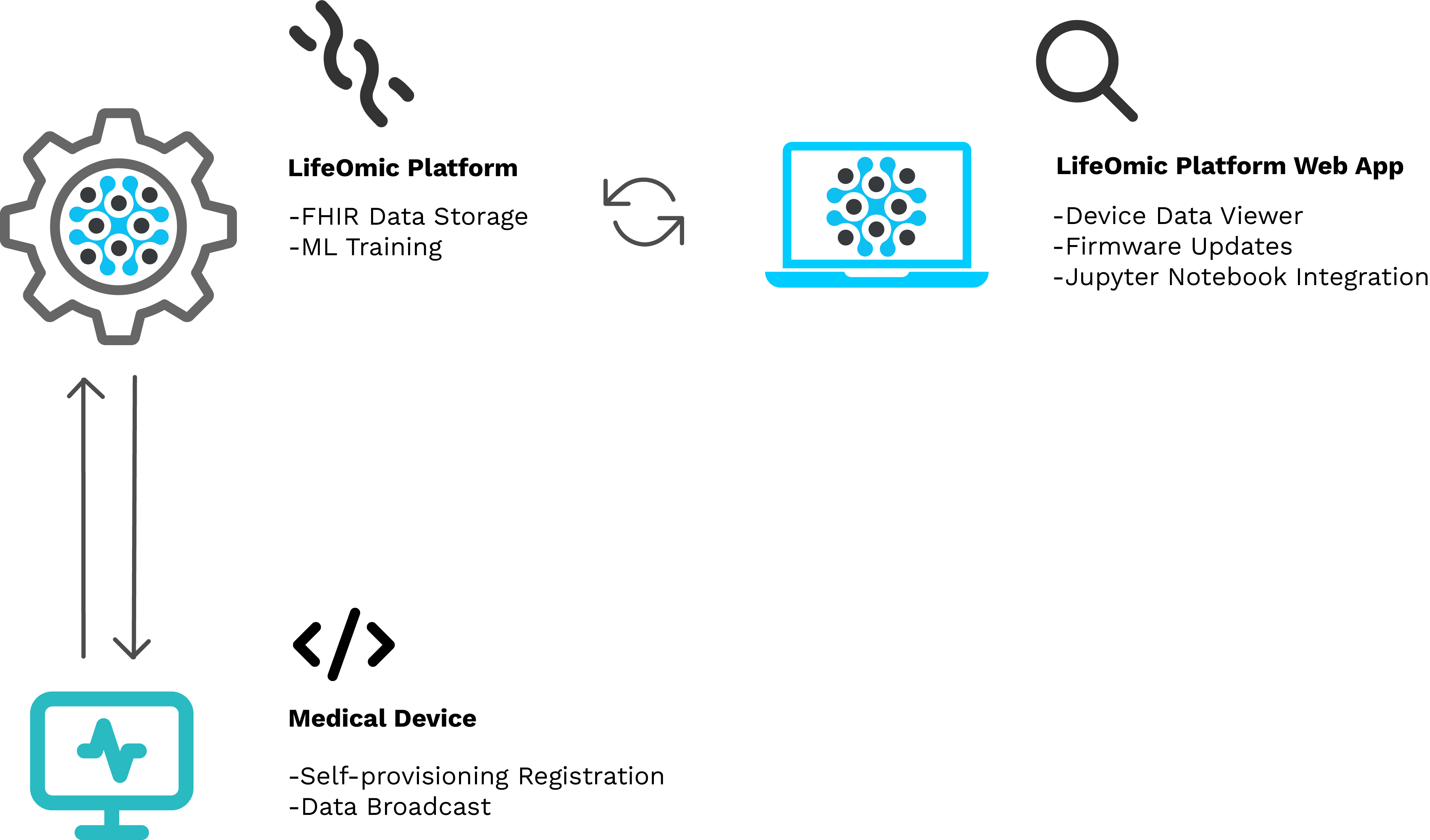Medical Devices
The LifeOmic Platform provides a secure home for your medical device data and allows you to collect, store, and analyze data from your registered devices. It brings your remote device onto the same data platform used by medical researchers at a major university health system.

Register your Devices
The LifeOmic Platform offers a self-provisioning registration workflow. Manufacturers use the LifeOmic Platform web app to create and download a claim certificate. The developer at the manufacturer installs the claim certificate in their general device code. Upon activation, an individual device establishes a connection with the LifeOmic Platform. This allows the LifeOmic Platform to exchange the claim certificate for a unique device certificate. The claim certificate is shared across all of your devices, while each device self-provisions for a unique device certificate.
A device certificate is similar in concept to an API key but with key differences. Device certificates are tied to a specific device, not a user. And device certificates never expire, unlike API keys that will expire after a year or less. To learn more about API keys and the LifeOmic Platform authentication, see the Authentication FAQ.
Data Transfer
The LifeOmic Platform supports communicating with medical devices through MQTT, a lightweight protocol designed for connecting remote devices. MQTT is widely adopted and recommended for IoT implementations. MQTT works on the publish/subscribe model and is designed for a small code footprint and minimal bandwidth needs.
Visualize FHIR Data
The LifeOmic Platform web app offers a sophisticated viewer to observe and analyze device data. Data is stored with the FHIR standard and includes a vast range of observations. Metrics include device-centric observations, such as machine idle time and in-use time, and patient-centric observations, such as blood oxygen saturation.

Data Science Tools
The LifeOmic Platform sets up access to your device data for popular data science tools, including Jupyter Notebooks and Machine Learning (ML) capability. The LifeOmic Platform integrates with Jupyter Notebooks through LifeOmic Notebooks. LifeOmic Notebooks are a fully managed Jupyter Notebook service that provides the ability to analyze large and small data sets. Jupyter Notebooks are an open-source web application widely utilized by clinical researchers and data scientists. For more information, see the Jupyter Notebooks Overview.
The LifeOmic Platform also offers our ML service to work with your medical device data. This service gives medical device companies the ability to train and deploy their own models on their data in a simplified way. The ML service handles all the extract, transform, and load (ETL) work of getting your patient or medical device data to your model for training and inference. Our platform currently supports semantic image segmentation ML models, and we are working on support for additional problem types.
Resources
- Provision Medical Devices on the LifeOmic Platform - Use the LifeOmic Platform web app to generate your claim certificate
- Open Source Repo with Starter Code - Start with our sample code to connect your device to the LifeOmic Platform
- API Reference Information for Medical Devices - Read the API Reference documentation for the Medical Device Firmware and Medical Device Provisioning APIs
- How to Integrate Your Medical Device with the LifeOmic Platform - Securely store your medical device data in the cloud
- Medical Device failure analysis with the LifeOmic Platform - Establish root cause analysis for devices in the field
- How to Build a Mobile App for a Medical Device with the LifeOmic Platform - Build your own version of LifeOmic’s device companion app for users to manage your device
- Getting Started with Notebooks in the LifeOmic Platform - Analyze medical data with a Jupyter Notebook on the LifeOmic Platform
- Secure health data storage can be the easiest part of your startup - Build health software with secure data storage on the LifeOmic Platform